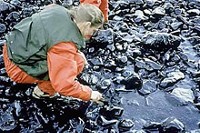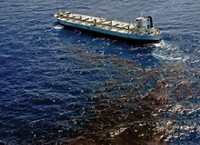Advertisement
Grab your lab coat. Let's get started
Welcome!
Welcome!
Create an account below to get 6 C&EN articles per month, receive newsletters and more - all free.
It seems this is your first time logging in online. Please enter the following information to continue.
As an ACS member you automatically get access to this site. All we need is few more details to create your reading experience.
Not you? Sign in with a different account.
Not you? Sign in with a different account.
ERROR 1
ERROR 1
ERROR 2
ERROR 2
ERROR 2
ERROR 2
ERROR 2
Password and Confirm password must match.
If you have an ACS member number, please enter it here so we can link this account to your membership. (optional)
ERROR 2
ACS values your privacy. By submitting your information, you are gaining access to C&EN and subscribing to our weekly newsletter. We use the information you provide to make your reading experience better, and we will never sell your data to third party members.
Environment
Engineers Test New Technique To Clean Up Oil Leak
Oil Spill: Underwater application of chemical dispersants may prevent oil from reaching the surface
by Michael Torrice
May 5, 2010

To clean up the growing oil spill in the Gulf of Mexico, engineers have begun testing a new technique to stop the leaking oil from reaching the ocean surface. Experts hope that this novel approach will limit how much oil reaches the fragile wetlands along the Gulf's coast. Preventing oil's landfall is a major goal in any oil-spill response, but is particularly critical because of this crude oil's chemical make-up.
The spill began when the Deepwater Horizon oil exploration platform sank after an April 20 explosion. The damaged wellhead leaks 5,000 barrels of oil per day into the ocean.
During the past weekend, engineers controlled remotely operated underwater vehicles to inject chemical solutions called dispersants 5,000 feet below the ocean surface, directly into the plume of oil jetting out from a broken pipe, according to a statement by the Deepwater Horizon Joint Information Center.
Dispersants, a mixture of solvents, surfactants, and other compounds, act like dish detergent: hydrophobic portions of the surfactant molecules surround the greasy oil and hydrophilic ends contact the water to form micelles. Through this process, the dispersants break up the oil into smaller particles that then scatter into the water, where microbes can degrade the oil or ocean currents can carry it away from shore.
The underwater dispersant technique is a twist on a standard clean-up method that crews in the Gulf have deployed widely: Planes spray the dispersants onto the ocean surface to break up the oil slick. Clean-up crews have already used more than 190,000 gallons of the dispersants known as Corexit 9500 and Corexit EC9527A, which are produced by Nalco Company of Naperville, Ill.
But because of this specific crude oil's chemical properties, preventing oil from reaching the surface is key, experts say.
Geochemist Edward Overton of Louisiana State University, in Baton Rogue, and his coworkers have tested samples of the oil for NOAA and determined that it contains surprisingly high levels of asphaltenes, the high molecular weight compounds that refineries distill from crude oil to make road tars. When the scientists precipitated out the asphaltenes from the spill oil, Overton says, they found something unexpected: a creamy, brown precipitate instead of typical black asphaltene solids. The scientists are running tests to further analyze these unusual asphaltenes and hope to collect more oil samples to characterize the crude better in general.
Asphaltenes promote emulsification, or mixing of oil and water. In a tanker spill, emulsification would happen gradually, because the oil would spill directly onto the ocean surface and waves would provide the energy to mix the oil and water. But Overton thinks that oil from this underwater leak may emulsify as it travels the 5,000 feet to the surface.
As emulsified oil, or "mousse," the crude behaves differently at the surface.
"Instead of the oil floating on top of the water, it's kind of sitting down in the water, like a hot dog floating in water with a little bit of it sticking out and most of it below the water," Overton says. "That's going to slow down evaporation."
Less evaporation means more volatile aromatic compounds—the most-toxic chemicals in oil—may remain when the oil hits shore. Emulsified oil also hampers clean-up efforts at the surface because dispersants don't break it up as effectively as they do unmixed oil
"When you look at photographs of the spill, you see a lot of orange oil out there and that's emulsified oil," says geochemist Jacqueline Michel, president of Research Planning, Inc. in Columbia, South Carolina, a NOAA contractor for scientific assessment during oil spills. The emulsified oil further complicates the clean-up, since oil mixed with water nearly doubles in volume, Michel adds.
Experts agree that clean-up crews must prevent as much oil as they can from seeping into the shore's wetlands. In those fragile ecosystems, the disruption caused by clean-up equipment can be as harmful as the oil's own damage.
"These wetlands are already under siege from coastal erosion and pollutant runoff from the Mississippi River," says Nancy Kinner, co-director of the University of New Hampshire's Coastal Response Research Center, in Durham, which works with NOAA on oil spill research. "But this is adding insult to injury."





Join the conversation
Contact the reporter
Submit a Letter to the Editor for publication
Engage with us on Twitter